SIGGRAPH 2009: BioLogic: A Natural History of Digital Life
Chair(s):
- Rebecca Strzelec
-
- Pennsylvania State University, Altoona
Location:
New Orleans, Louisiana, United States of America
Dates:
August 3 - 7, 2009
Art Show Overview:
Network your senses.
_______________________________________________________________
The artworks assembled for BioLogic: A Natural History of Digital Life explore what can happen when biological forms and life processes encounter digital code and devices. A curious mixture of natural and electronic components in the exhibition recalls the idio-syncratic combinations of artifacts one would have seen in 17th-century cabinets of wonder. Another parallel for the exhibition could be Deleuze and Guattari’s conception of a plateau. They describe a plateau as “a continuous self-vibrating region of intensities,” where things are connected and related by proximity but never align to an orientation or achieve a collective end. The objects and installations in BioLogic query similar topics, but do so with distinct approaches and to marvelously divergent ends.
The exhibition’s enigmatic character became apparent late in the submission review process when jurors were finalizing their selections. The six jurors were asked to map the themes and associations suggested by the works under consideration in order to organize them around common characteristics and conceptual relevance. So with “BioLogic” in the center of a whiteboard, arrows easily extended to gardening, arboretum, and differentiation. From there thoughts moved to landscape, terra-forms, and the post-apocalyptic; or branched off toward interface ecologies, fragile systems, and edge effect; which eventually led to synthetic life, augmentation, extinction, and muscle memory. Arranging projects in columns under thematic headings inevitably spurred additional, often incompatible sub-themes that required new headings and reconsideration of categorizations established earlier. A dense tangle of ideas and issues associated with the works quickly expanded beyond the whiteboard like a plateau of intensities with no fixable horizon for orientation.
Many of the projects in the exhibition do have one feature in common: a focus on the viewer. Duchamp famously observed that it is the viewer who finishes a work of art. In BioLogic, the viewer often initiates interaction with a piece, activating it with a touch or sound, causing a branch to lift up, a muscle to twitch, or an animated form to bulge and sprout. Installations provide customized goggles and tactile interfaces to compensate for limited vision, or responsive garments to aid acclimation to foreign habitats. Human influence is made apparent, even required, and human capacities are probed to manifest their extent and vulnerability. Finding oneself entangled in an exhibition about nature and technology should not come as a surprise given our dual status as irreducibly biological and at the same time engineers of the technological contrivances that sustain us—and threaten our survival. BioLogic candidly reminds the viewer, “You are here,” inescapably snarled in the unruly confluence that is our bio-human-tech home.
Elona Van Gent, University of Michigan
Committee(s):
- Cézanne Charles
-
- ArtServe Michigan
- John Marshall
-
- University of Michigan
- Carrie Morris
- Mona Kasra
-
- University of Virginia
General Committee:
Website:
https://www.siggraph.org/s2009/galleries_experiences/biologic_art/index.php
Exhibition Artworks:
-
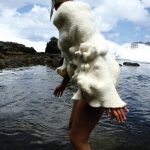
Artifacts from a Parallel Universe: Tent...
[Xárene Eskandar]
Categories: [3D & Sculpture] -
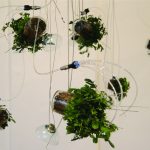
Biological Instrumentation
[Nina Tommasi]
Categories: [Installation] -
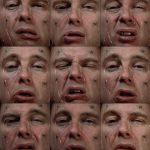
Electric Eigen Portraits
[Arthur Elsenaar]
Categories: [Animation & Video] -
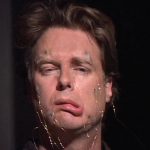
Face Shift
[Arthur Elsenaar]
Categories: [Animation & Video] -

Fur-Fly
[Kumiko Kushiyama]
Categories: [Interactive & Monitor-Based] -
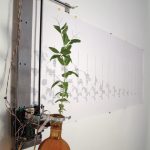
Growth Rendering Device
[David Bowen]
Categories: [Installation] -

Hylozoic Soil
[Philip Beesley]
Categories: [Installation] -
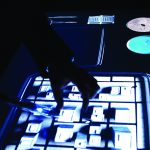
Mr. Lee Experiment
[Sanghun Lee]
Categories: [Installation] -
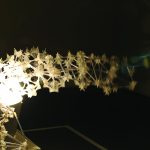
MSOrgm (Motivational Sensitive Organism)
[Scottie Chih-Chieh Huang]
Categories: [Installation] -
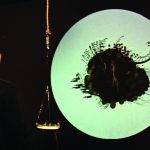
One
[Yoon Chung Han]
Categories: [Interactive & Monitor-Based] -
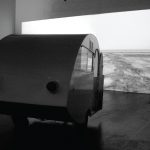
Post Global Warming Survival Kit
[Petko Dourmana]
Categories: [Installation] -
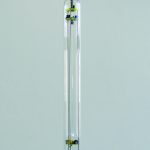
TRANSDUCERS
[Verena Friedrich]
Categories: [Electronic/Robotic Object] [Installation]
Exhibition Writings and Presentations:
-
Title:
A New System to Appreciate the Visual Characteristics of a Painting
Author(s):
Category: Paper
Abstract Summary:
A painting-viewing system is proposed as a tool to help painting appreciation and to improve the museum experience. This system simultaneously highlights certain visual characteristics of multiple paintings, thus informing users of the links between paintings and the semantic elements that may appear superficially different, and also conveying the art-historical explanation of those characteristics. Through this system’s evaluation, the approach based on “the awareness of the visual characteristics” may be effective as a method of developing the user’s interest in the paintings. When this system is placed in museums and galleries as a mediation tool, it will be useful to a viewer’s preparation for the art-viewing experience. This paper presents the concepts behind the system’s development and the results of the first survey as a piece of a larger project to explore the improvement of painting appreciation as a museum experience.
Title: Experimental Interaction Unit: Commodities of Mass Destruction
Author(s):
Category: Paper
Abstract Summary:
This paper describes several projects by the now-defunct Experimental Interaction Unit that use prod-uct design, software engineering, and digital networking to uncover collective behaviors that contribute to systems of social control. Biology and human behavioral studies are essential aspects of this critique. Experimental Interaction Unit’s projects from 1996 to 2001 represent subversive use of technology to reveal unrecognized aspects of human interaction with networks, such as how telematic distance psy-chologically absolves individuals from taking responsibility for their actions. The fear of vulnerability to terrorist actions, including biological warfare and electronic interference, is exploited in these works, in order to expose the ways in which security is promised in exchange for control.
Title: MobiSpray: Mobile Phone as Virtual Spray Can for Painting BIG Anytime Anywhere on Anything
Author(s):
Category: Paper
Abstract Summary:
This paper presents MobiSpray, a novel interactive art tool for creating ubiquitous ephemeral digital art. The mobile phone is employed as a virtual spray can to spray dabs of digital paint onto the physical environment via large-scale projections. The gesture-based control of the mobile phone provides a natural pointing mechanism for the virtual spray can. Experiences from extensive field use around the world testify in favor of a successful design. Most importantly, MobiSpray liberates and empowers the artist to change the environment via large-scale artistic expressions.
Title: Re-Visioning the Interface: Technological Fashion as Critical Media
Author(s):
Category: Paper
Abstract Summary:
This paper elucidates two positions (the positivist and the critical) that inform the creative design of technological fashion. On the one side is the instrumentalist trend toward the minimized or disappear-ing interface. On the other, some theorists and artists suggest that increased invisibility presents social and ethical concerns (such as invasiveness and control) when networking and communication devices are involved.
The positivist side has roots in modernist design. Positivist designers create responsive and control-lable fabrics using shape-changing polymers, e-textiles, and nano-scale electronics to resolve clumsy and prohibitive problems of hardware vs. body. The critical side draws upon archetypal ideas about technology and the body that are familiar from literature and science fiction, and includes writers and media artists who emphasize the intractable or mechanic nature of technological clothing to enhance, rather than erase, the body. The paper concludes that both positions must be considered as the field of technological fashion moves forward.
Title: Souvenirs du monde des montagnes
Author(s):
Category: Paper
Abstract Summary:
This paper describes a particular book called Souvenirs du monde des montagnes, which draws its iconography from the history of a Swiss mountain family from 1910 to 1930. By simply dipping into the first few pages, the reader will be lost between real and virtual universes, wonder about the evolution of the images’ meanings, and question an object’s true content. This setup, developed using state-of-the-art computer vision technology, offers unprecedented freedom: we can make technological references disappear to place the user in fruitful turmoil between visible and hidden meanings. The shadow of a bird flies over the pages, foxes’ lanterns light up the text, paper mountains emerge. Once the last page has been turned, the reader will never look at books in the same way again.
Title: The 200 Year Continuum
Author(s):
Category: Paper
Abstract Summary:
The 200 Year Continuum is the producer, recorder, and exhibitor in Christian Kerrigan’s advancing anthology of narratives. Central to Kerrigan’s practice is storytelling and mythmaking as a means of engaging his audience. Kerrigan uses drawing as his primary mode of research into these narratives, which are consequently offered in the form of live internet-feed installations acting as ecological sites, scientific experiments introducing new organic technologies, and digital images of worlds unseen. Each addition acts as a “middle story” within The 200 Year Continuum. In his narrative, The Amber Clock, a ship is grown in the yew forest of Kingley Vale over a period of 200 years. The narrative explores the possibilities of time in relationship to technology and the natural world. In his narrative, artificial and wild systems are choreographed, and the natural production of resin is harvested from the yew trees as a way of measuring time.
Title: Wearable Forest Clothing System: Beyond Human-Computer Interaction
Author(s):
Category: Paper
Abstract Summary:
Wearable Forest is a garment that bioacoustically interacts with distant wildlife in a remote forest through a networked remote-controlled speaker and microphone. It expresses the unique bioacoustic beauty of nature and allows users to interact with a forest in real time through a network to acoustically experience a distant forest soundscape, thus merging humans and nature without great environmental impact. This novel interactive sound system can create a sense of unity between users and a remote soundscape, enabling users to feel a sense of belonging to nature even in the midst of a city. This paper describes the theory of interaction between the Human and the Biosphere through the design process of the Wearable Forest concept.




